 Facebook
Facebook
 X
X
 Instagram
Instagram
 TikTok
TikTok
 Youtube
Youtube
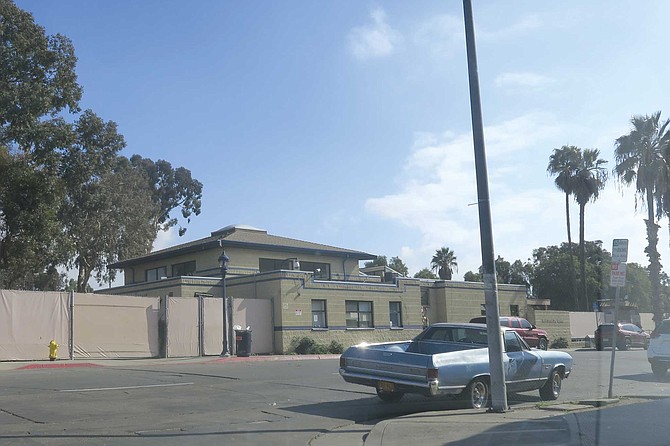
The A Mart convenience store is located at the El Cajon Transit Center, a bustling terminal for trains and buses located at 250 South Marshall Avenue on the west side of El Cajon Valley, where Interstate 8 twists north before straightening out again on its journey eastward.
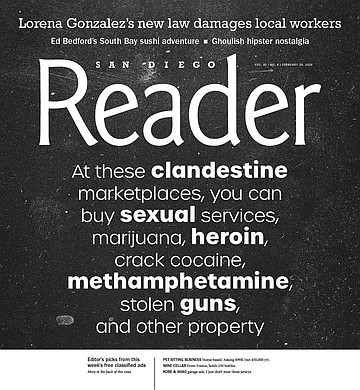
A sign posted on the concrete brick wall proclaims it to be an official “MTS Station Shop,” and inside you’ll find all sorts of snacks, candy, and other typical convenience store fare.
The park-and-ride lot to the north, meanwhile, has become a popular marketplace for black tar heroin and methamphetamine, priced at $5 to $10 a hit and often sold by dealers who live in their cars or motorhomes on the fringes of the vast lot, in the shadow of a bougainvillea-draped berm above which the bright red trolleys glide along.
“There’s always a bunch of foot traffic,” said one El Cajon police officer who asked not to be identified by name. “People get their EBT cards so they have cash, and now that you’re able to live in your car there’s also mobile distribution, and everyone has cell phones.” If the cops show up, these mobile drug dispensaries simply close up shop and drive away. “You’ll see people with whole sandwich bags full of meth,” the officer says. “It’s become so cheap.”
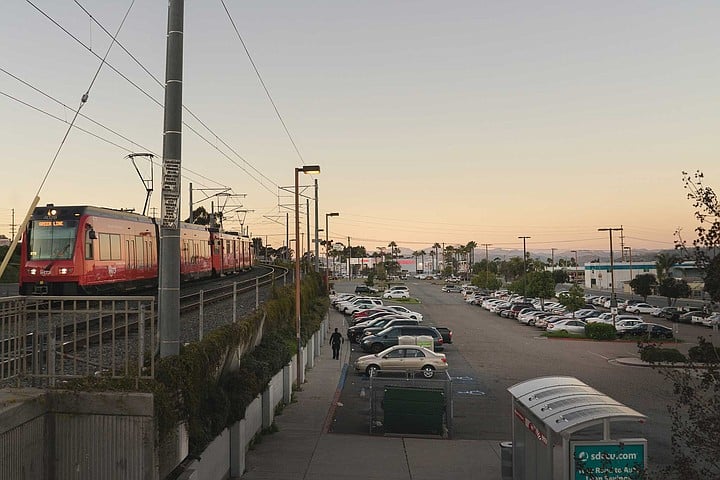
The El Cajon Transit Center park-and-ride is just one of dozens of spots throughout San Diego County where illegal commerce is thriving. At these clandestine marketplaces, you can buy sexual services, marijuana, heroin, crack cocaine, methamphetamine, and stolen guns and other property.
Just as in the legitimate retail world, online sales have hurt street-crime peddlers, particularly in the area of stolen goods, which are now much more commonly offered for sale on Craigslist and Facebook Marketplace than on some street corner or transit-center parking lot. The Internet now accounts for 70 percent of prostitution, though there are still areas around town where street prostitution is prevalent. Street drug sales are now the most prevalent form of illegal commerce, law enforcement officials say. Heroin sales are rising due to tighter controls around prescription opioids, and meth sales are booming due to the drug’s low cost and plentiful supply.
Our map of two dozen illegal commerce spots — spread out throughout San Diego County — was compiled through law enforcement officials; beat cops who walk the streets; executives with non-profits that work with the homeless, addicts and sex workers; and ordinary people who may have done business of some sort at one or more of these underground shops.
Many of these places are known by police, and subject to periodic crackdowns. But for whatever reason — location, access to escape routes, or reputation — they continue to thrive.
We took into account newspaper reports, arrest records, and crime maps, but our focus is not on what’s happened in the past. It’s on what’s happening now.
City of San Diego
This rough little stretch of road, pushed up against the Interstate 5 freeway on the eastern end of East Village, was overlooked by the redevelopment that transformed the former produce district into a yuppie paradise centered around the Petco Park baseball stadium. No fancy high-rise condos or gastropubs here; just aging bungalows and apartments and a steady parade of vagrants selling drugs. “The dealers use homeless people to move their narcotics for them,” says Bob McElroy of the Alpha Project, a nonprofit that provides housing and other services to the homeless. “And there are a lot of escape routes, with a lot of folks who do this stuff even running out onto the freeway overpass where it becomes the CHP jurisdiction.”
McElroy says the low-income families who live in the area “are fed up with it, and the police are now starting to do enforcement.” In October, a grand jury handed down 30 indictments against 41 accused drug dealers in East Village, nabbed during a summer-long sting. Twelve of the arrests were made on 17th Street.
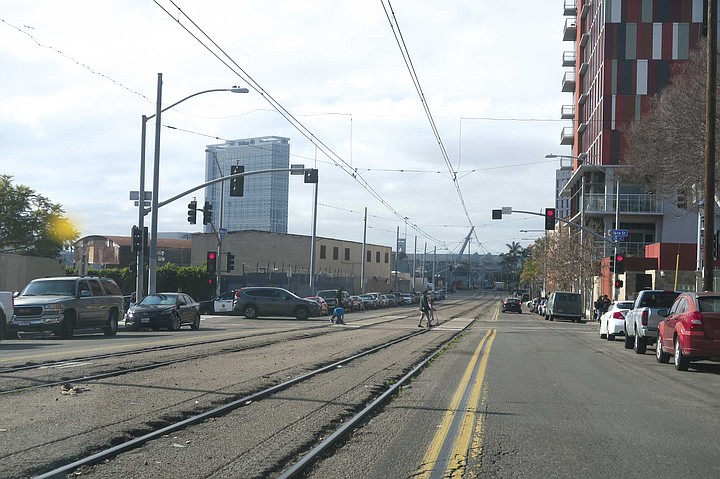
More vagrants selling drugs along the trolley tracks that bisect the wide boulevard, the Alpha Project’s Bob McElroy says. “Again, it’s a place that doesn’t have a lot of traffic — you’re kind of out of the way there, and addicts go to places of least resistance, where they can hide in little nooks and crannies.”
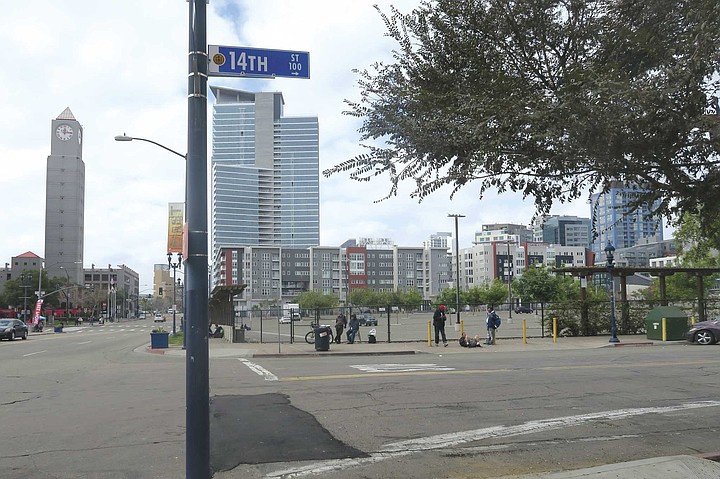
Home to the Padres Tailgate Parking Lot, this corner is another hot spot for vagrants selling drugs on the street, in “nickel” ($5) or “dime” ($10) baggies. “This corner is a whole other monster,” says one San Diego police officer who asked his name not be used.
Hookers routinely walk the street here, turning tricks, generally at night, San Diego police say. Sometimes they venture north to Boston Street, the north side of which is a long parking lot overlooking Interstate 5.
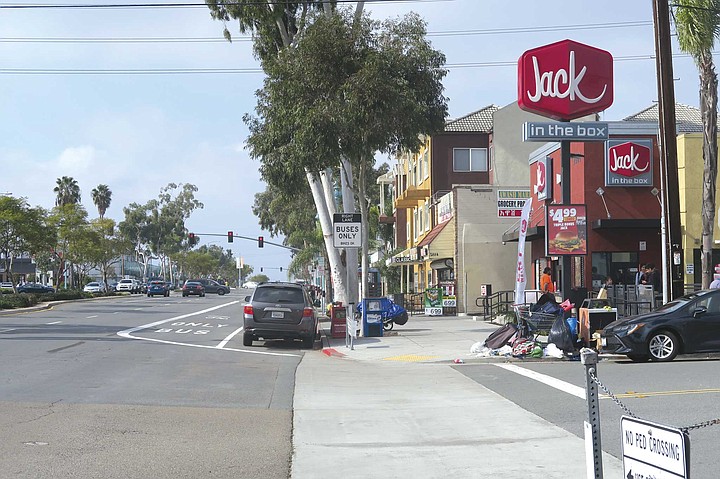
Grandly referred to as “The Boulevard,” this was once a key east-west thoroughfare for San Diegans prior to the construction of Interstate 8. There’s even a video clip on YouTube of President John F. Kennedy in a motorcade cruising down the boulevard in June 1963. But since the 1970s, San Diego police say, the area has been a hotbed for street prostitution, particularly near the intersection with Kansas Street, near the Interstate 805 crossover. Tricks are turned mostly in cars parked on side streets. Despite frequent police crackdowns, the hookers remain. “And the majority of them are young,” says Grace Williams, president of Children of the Immaculate Heart, a charity that provides services to sex trafficking victims. “The average age of girls getting into prostitution is 16.”
The hotels along Hotel Circle in Mission Valley, particularly on the south side, are a popular spot for sex workers to meet up with clients they solicit on the Internet. Grace Williams of Children of the Immaculate Heart says 70 percent of prostitution is generated online, through ads, websites, and “clubs,” and the meeting grounds are often hotels. The problem in recent years has become so bad that in 2016 the San Diego County Regional Human Trafficking and Commercial Exploitation of Children Advisory Council developed a training program for hotels and motels on how to detect signs of human trafficking, such as guests paying in cash, asking for a room away from high-traffic areas, and condom wrappers in the trash.
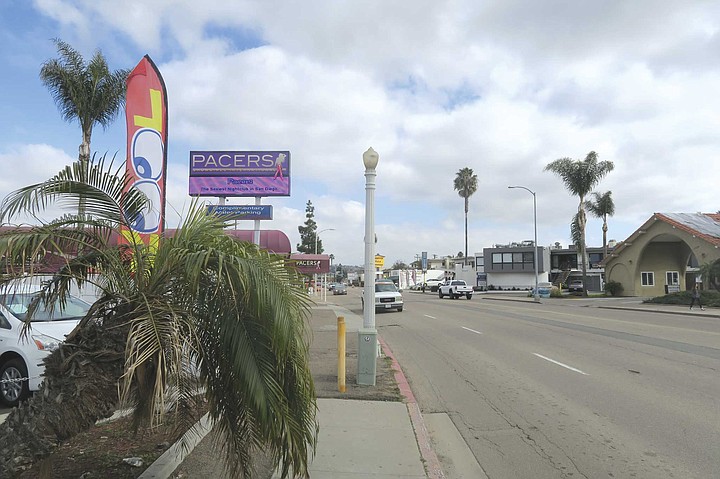
The Midway District, home to several strip clubs and near the Marine Corps Recruit Depot, is one of the few remaining spots in the city of San Diego where street prostitution is still a problem. And Midway Drive, with its proliferation of strip malls, provides perfect cover for various sex acts in parked cars as well as in hotels south on Rosecrans.
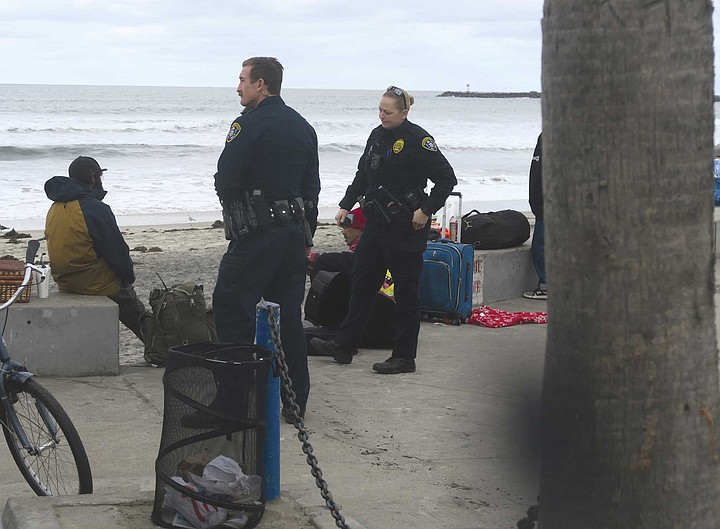
The seawall in Ocean Beach at the foot of Newport Avenue is well known as the “go to” spot to buy weed. It’s been that way since the 1960s, when Ocean Beach was ground zero for San Diego’s counterculture. In recent years, with the decriminalization of cannabis, dealing is done much more openly for those who don’t want to contend with dispensaries’ higher prices.
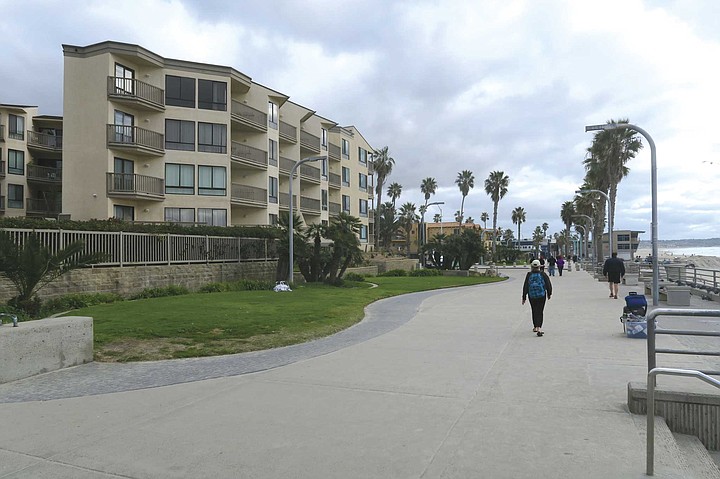
The section of Ocean Front Walk between Garnet Avenue to the north and Grand Avenue to the south has been turned into a pedestrian promenade, wider than the boardwalk to the south and flanked by grassy knolls and a row of oceanfront benches. It’s become a popular hangout for vagrants, and is known through the Pacific Beach community as the place to buy street drugs, from marijuana to heroin, methamphetamine, and cocaine.
San Diego Police report an uptick in gang activity over the summer in the community of Linda Vista, centered around this busy commercial intersection — home to a Vietnamese supermarket and other businesses. Local gangs engage in street sales of heroin, methamphetamine, and heroin.
Carlsbad

Carlsbad police say there are no illegal commerce sites anywhere in their city, but locals maintain otherwise. A big tree facing the Harding Avenue parking lot at this 7.7-acre community park has become a popular hangout for vagrants who often engage in drug use and drug sales, ranging from marijuana to heroin. One Yelp reviewer in December 2019 bemoaned “the dozens of very verbally aggressive and confrontational homeless people,” and crime reports for that same month show seven drug or alcohol arrests.
Chula Vista
E Street east of Interstate 5 is home to several inexpensive motels that are sometimes frequented by hookers and their clients. On the south side of the street is the E Street Transit Center, which, like many other transit centers around the county, has become a hangout for transients. “The Chula Vista Police Department is aware the on/off ramps near the I-5 and I-805 corridor are a more common area to have issues such as prostitution and illegal drug-related sales,” says the department’s Lieutenant Dan Peak. “These areas near the freeway contain trolley lots, motels, and business zones. Chula Vista does not have a ‘red-light district’ where prostitutes gather and walk the streets. Almost all of our human trafficking activity has moved online. A few years ago, it was all available through various websites such as Craigslist and Backpage.com. Recently, federal law enforcement agencies took steps to crack down on and, in some cases, seize these websites. Now, most sex-related advertisements have moved to pay sites. The prostitution activity that does occur is usually driven by Internet listings and takes place in motels, private residences, or in vehicles.”
This section of the wide boulevard has plenty of legitimate businesses, including a strip mall that is home to Cricket Wireless, a Mexican bakery and taco shop, and an e-smoke shop. But at night there’s more illegal commerce in motels and parking lots, law enforcement and other sources say.
A fenced-off vacant lot on the southeast corner of this south Chula Vista intersection is pitch black during the night; on the other side of Industrial is the Palomar Transit Center.
Again, police report a variety of illegal commerce in motels that is typically arranged online but consummated in hotels – and hotel parking lots.
El Cajon
Escondido
The Square is a rectangular patch of downtown Escondido just off Interstate 15, bounded by Center City Parkway to the west, North Escondido Boulevard to the east, West Washington Avenue to the north, and West Valley Parkway to the the south. For years, the Square was a hotbed of street hooking. The problem was so bad that several years ago, i-SAFE Ventures, an organization focused on helping educational and commercial organizations protect children, partnered with Carlsbad High School’s broadcast studio to produce a documentary on sex trafficking in North County, with The Square prominently featured. Nowadays, street prostitution has largely subsided, says Lieutenant Chris Lick with the Escondido Police Department. “Many things changed once online solicitation became the norm,” he says. “Many of the prostitution acts take place in motels, but there is not a specific location. Neither prostitutes nor nor johns are found in The Square much these days.”
Imperial Beach
Imperial Beach has been cleaned up significantly over the last few years, and 10 years, ago, the Portwood Pier Plaza received a massive makeover that included the installation of a colorful public art display: “Surfhenge,” consisting of four 16-to-20-foot-high acrylic surfboard-shaped arches. And yet law enforcement officials say drug sales continue to be a problem, generally small quantities of marijuana or methamphetamine.
Lemon Grove
A proliferation of gang activity around the trolley station in this East County town is behind the sex trafficking going on in the parking lot and surrounding streets, sources say. While most prostitution in the county now occurs online, street prostitution is still active here, in the shadow of Lemon Grove’s famous lemon sculpture welcoming visitors to town. It’s not as bad as on El Cajon Boulevard, “but it’s there, and it’s driven mostly by the gangs in the area,” says one source.
National City
The roadside hotels and motels on National City Boulevard are popular with prostitutes who book their clients online, through various websites, says Children of the Immaculate Heart’s Grace Williams. “Hotels have become the number one place for commercial sex in San Diego. They’re much more discreet, and you’re much less likely to get caught.”
The hotels of National City were part of a January 2018 multi-agency sting headed by the San Diego County District Attorney’s Office and the San Diego Human Trafficking Task Force that led to 29 arrests. In September 2018, two men were arrested at the Ramada Inn on National City Boulevard after attempting to pick up a woman and her 16-year-old sister to work as prostitutes.
Oceanside
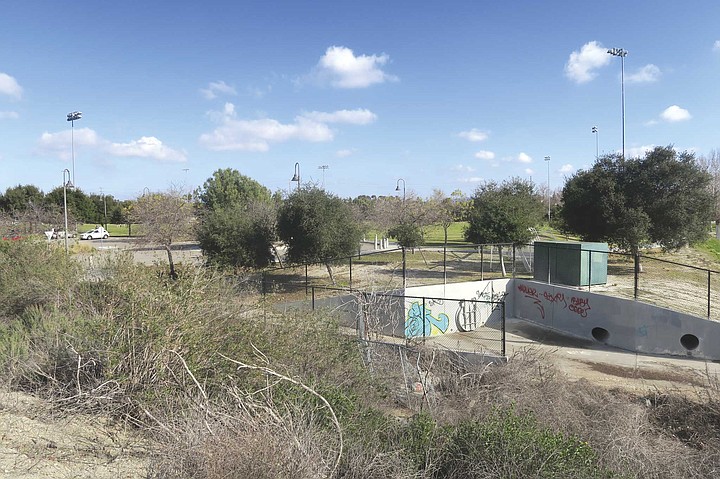
This park, just south of the San Luis Rey River, has multipurpose sports fields, a picnic area, and a playground. It’s popular among bicyclists who ride the San Luis Rey River Bike Trail to the ocean and back, a distance of about 15 miles. Recently, the park also has become popular with drug dealers, many of them gang members, who sell methamphetamine. It’s a long, linear park, and patrol cars can be seen from a distance should they enter from College Boulevard. Illegal commerce has picked up at the park since shootings and police crackdowns at nearby Libby Lake and Melba Bishop parks, says Oceanside police spokesman Tom Bussey. “It just kind of moves around,” he says. “Our officers are good at staying on top of stuff; we follow the crime wherever it goes.”
What do you get when you cross a dark, multi-story parking structure with a transit center that is a notorious hangout for vagrants and drug peddlers? An indoor flea market of illegal commerce. Illegal activity used to occur under the Oceanside Pier, says Oceanside police spokesman Tom Bussey, but regular police sweeps cleaned up that area only to see it resurface here, right across the street from pricey new condos — and across the railroad tracks from the SpringHill Suites by Marriott, one of the Oceanside waterfront’s much-ballyhooed new hotels. Two recent Trip Advisor reviews complain the hotel lobby “reeks of marijuana.” The three-story parking structure was opened in 2006 and is open 22 hours a day (it is closed from 2-4 am for cleaning). Parking is free.
Vista
You’d think the center of North County law enforcement — with facilities housing the Superior Court, Sheriff, Probation, and District Attorney offices, along with a county jail — would be the most crime-free spot in town. Wrong. Sheriff’s deputies won’t cop to it, but sources say the vast parking lot surrounding the buildings is rife with drug sales and other crimes. The county’s computer-generated crime map bears this out, with a steady stream of arrests for marijuana and narcotics sales, and even more busts for battery and assault.


The A Mart convenience store is located at the El Cajon Transit Center, a bustling terminal for trains and buses located at 250 South Marshall Avenue on the west side of El Cajon Valley, where Interstate 8 twists north before straightening out again on its journey eastward.

A sign posted on the concrete brick wall proclaims it to be an official “MTS Station Shop,” and inside you’ll find all sorts of snacks, candy, and other typical convenience store fare.
The park-and-ride lot to the north, meanwhile, has become a popular marketplace for black tar heroin and methamphetamine, priced at $5 to $10 a hit and often sold by dealers who live in their cars or motorhomes on the fringes of the vast lot, in the shadow of a bougainvillea-draped berm above which the bright red trolleys glide along.
“There’s always a bunch of foot traffic,” said one El Cajon police officer who asked not to be identified by name. “People get their EBT cards so they have cash, and now that you’re able to live in your car there’s also mobile distribution, and everyone has cell phones.” If the cops show up, these mobile drug dispensaries simply close up shop and drive away. “You’ll see people with whole sandwich bags full of meth,” the officer says. “It’s become so cheap.”

The El Cajon Transit Center park-and-ride is just one of dozens of spots throughout San Diego County where illegal commerce is thriving. At these clandestine marketplaces, you can buy sexual services, marijuana, heroin, crack cocaine, methamphetamine, and stolen guns and other property.
Just as in the legitimate retail world, online sales have hurt street-crime peddlers, particularly in the area of stolen goods, which are now much more commonly offered for sale on Craigslist and Facebook Marketplace than on some street corner or transit-center parking lot. The Internet now accounts for 70 percent of prostitution, though there are still areas around town where street prostitution is prevalent. Street drug sales are now the most prevalent form of illegal commerce, law enforcement officials say. Heroin sales are rising due to tighter controls around prescription opioids, and meth sales are booming due to the drug’s low cost and plentiful supply.
Our map of two dozen illegal commerce spots — spread out throughout San Diego County — was compiled through law enforcement officials; beat cops who walk the streets; executives with non-profits that work with the homeless, addicts and sex workers; and ordinary people who may have done business of some sort at one or more of these underground shops.
Many of these places are known by police, and subject to periodic crackdowns. But for whatever reason — location, access to escape routes, or reputation — they continue to thrive.
We took into account newspaper reports, arrest records, and crime maps, but our focus is not on what’s happened in the past. It’s on what’s happening now.
City of San Diego
This rough little stretch of road, pushed up against the Interstate 5 freeway on the eastern end of East Village, was overlooked by the redevelopment that transformed the former produce district into a yuppie paradise centered around the Petco Park baseball stadium. No fancy high-rise condos or gastropubs here; just aging bungalows and apartments and a steady parade of vagrants selling drugs. “The dealers use homeless people to move their narcotics for them,” says Bob McElroy of the Alpha Project, a nonprofit that provides housing and other services to the homeless. “And there are a lot of escape routes, with a lot of folks who do this stuff even running out onto the freeway overpass where it becomes the CHP jurisdiction.”
McElroy says the low-income families who live in the area “are fed up with it, and the police are now starting to do enforcement.” In October, a grand jury handed down 30 indictments against 41 accused drug dealers in East Village, nabbed during a summer-long sting. Twelve of the arrests were made on 17th Street.

More vagrants selling drugs along the trolley tracks that bisect the wide boulevard, the Alpha Project’s Bob McElroy says. “Again, it’s a place that doesn’t have a lot of traffic — you’re kind of out of the way there, and addicts go to places of least resistance, where they can hide in little nooks and crannies.”

Home to the Padres Tailgate Parking Lot, this corner is another hot spot for vagrants selling drugs on the street, in “nickel” ($5) or “dime” ($10) baggies. “This corner is a whole other monster,” says one San Diego police officer who asked his name not be used.
Hookers routinely walk the street here, turning tricks, generally at night, San Diego police say. Sometimes they venture north to Boston Street, the north side of which is a long parking lot overlooking Interstate 5.

Grandly referred to as “The Boulevard,” this was once a key east-west thoroughfare for San Diegans prior to the construction of Interstate 8. There’s even a video clip on YouTube of President John F. Kennedy in a motorcade cruising down the boulevard in June 1963. But since the 1970s, San Diego police say, the area has been a hotbed for street prostitution, particularly near the intersection with Kansas Street, near the Interstate 805 crossover. Tricks are turned mostly in cars parked on side streets. Despite frequent police crackdowns, the hookers remain. “And the majority of them are young,” says Grace Williams, president of Children of the Immaculate Heart, a charity that provides services to sex trafficking victims. “The average age of girls getting into prostitution is 16.”
The hotels along Hotel Circle in Mission Valley, particularly on the south side, are a popular spot for sex workers to meet up with clients they solicit on the Internet. Grace Williams of Children of the Immaculate Heart says 70 percent of prostitution is generated online, through ads, websites, and “clubs,” and the meeting grounds are often hotels. The problem in recent years has become so bad that in 2016 the San Diego County Regional Human Trafficking and Commercial Exploitation of Children Advisory Council developed a training program for hotels and motels on how to detect signs of human trafficking, such as guests paying in cash, asking for a room away from high-traffic areas, and condom wrappers in the trash.

The Midway District, home to several strip clubs and near the Marine Corps Recruit Depot, is one of the few remaining spots in the city of San Diego where street prostitution is still a problem. And Midway Drive, with its proliferation of strip malls, provides perfect cover for various sex acts in parked cars as well as in hotels south on Rosecrans.

The seawall in Ocean Beach at the foot of Newport Avenue is well known as the “go to” spot to buy weed. It’s been that way since the 1960s, when Ocean Beach was ground zero for San Diego’s counterculture. In recent years, with the decriminalization of cannabis, dealing is done much more openly for those who don’t want to contend with dispensaries’ higher prices.

The section of Ocean Front Walk between Garnet Avenue to the north and Grand Avenue to the south has been turned into a pedestrian promenade, wider than the boardwalk to the south and flanked by grassy knolls and a row of oceanfront benches. It’s become a popular hangout for vagrants, and is known through the Pacific Beach community as the place to buy street drugs, from marijuana to heroin, methamphetamine, and cocaine.
San Diego Police report an uptick in gang activity over the summer in the community of Linda Vista, centered around this busy commercial intersection — home to a Vietnamese supermarket and other businesses. Local gangs engage in street sales of heroin, methamphetamine, and heroin.
Carlsbad

Carlsbad police say there are no illegal commerce sites anywhere in their city, but locals maintain otherwise. A big tree facing the Harding Avenue parking lot at this 7.7-acre community park has become a popular hangout for vagrants who often engage in drug use and drug sales, ranging from marijuana to heroin. One Yelp reviewer in December 2019 bemoaned “the dozens of very verbally aggressive and confrontational homeless people,” and crime reports for that same month show seven drug or alcohol arrests.
Chula Vista
E Street east of Interstate 5 is home to several inexpensive motels that are sometimes frequented by hookers and their clients. On the south side of the street is the E Street Transit Center, which, like many other transit centers around the county, has become a hangout for transients. “The Chula Vista Police Department is aware the on/off ramps near the I-5 and I-805 corridor are a more common area to have issues such as prostitution and illegal drug-related sales,” says the department’s Lieutenant Dan Peak. “These areas near the freeway contain trolley lots, motels, and business zones. Chula Vista does not have a ‘red-light district’ where prostitutes gather and walk the streets. Almost all of our human trafficking activity has moved online. A few years ago, it was all available through various websites such as Craigslist and Backpage.com. Recently, federal law enforcement agencies took steps to crack down on and, in some cases, seize these websites. Now, most sex-related advertisements have moved to pay sites. The prostitution activity that does occur is usually driven by Internet listings and takes place in motels, private residences, or in vehicles.”
This section of the wide boulevard has plenty of legitimate businesses, including a strip mall that is home to Cricket Wireless, a Mexican bakery and taco shop, and an e-smoke shop. But at night there’s more illegal commerce in motels and parking lots, law enforcement and other sources say.
A fenced-off vacant lot on the southeast corner of this south Chula Vista intersection is pitch black during the night; on the other side of Industrial is the Palomar Transit Center.
Again, police report a variety of illegal commerce in motels that is typically arranged online but consummated in hotels – and hotel parking lots.
El Cajon
Escondido
The Square is a rectangular patch of downtown Escondido just off Interstate 15, bounded by Center City Parkway to the west, North Escondido Boulevard to the east, West Washington Avenue to the north, and West Valley Parkway to the the south. For years, the Square was a hotbed of street hooking. The problem was so bad that several years ago, i-SAFE Ventures, an organization focused on helping educational and commercial organizations protect children, partnered with Carlsbad High School’s broadcast studio to produce a documentary on sex trafficking in North County, with The Square prominently featured. Nowadays, street prostitution has largely subsided, says Lieutenant Chris Lick with the Escondido Police Department. “Many things changed once online solicitation became the norm,” he says. “Many of the prostitution acts take place in motels, but there is not a specific location. Neither prostitutes nor nor johns are found in The Square much these days.”
Imperial Beach
Imperial Beach has been cleaned up significantly over the last few years, and 10 years, ago, the Portwood Pier Plaza received a massive makeover that included the installation of a colorful public art display: “Surfhenge,” consisting of four 16-to-20-foot-high acrylic surfboard-shaped arches. And yet law enforcement officials say drug sales continue to be a problem, generally small quantities of marijuana or methamphetamine.
Lemon Grove
A proliferation of gang activity around the trolley station in this East County town is behind the sex trafficking going on in the parking lot and surrounding streets, sources say. While most prostitution in the county now occurs online, street prostitution is still active here, in the shadow of Lemon Grove’s famous lemon sculpture welcoming visitors to town. It’s not as bad as on El Cajon Boulevard, “but it’s there, and it’s driven mostly by the gangs in the area,” says one source.
National City
The roadside hotels and motels on National City Boulevard are popular with prostitutes who book their clients online, through various websites, says Children of the Immaculate Heart’s Grace Williams. “Hotels have become the number one place for commercial sex in San Diego. They’re much more discreet, and you’re much less likely to get caught.”
The hotels of National City were part of a January 2018 multi-agency sting headed by the San Diego County District Attorney’s Office and the San Diego Human Trafficking Task Force that led to 29 arrests. In September 2018, two men were arrested at the Ramada Inn on National City Boulevard after attempting to pick up a woman and her 16-year-old sister to work as prostitutes.
Oceanside

This park, just south of the San Luis Rey River, has multipurpose sports fields, a picnic area, and a playground. It’s popular among bicyclists who ride the San Luis Rey River Bike Trail to the ocean and back, a distance of about 15 miles. Recently, the park also has become popular with drug dealers, many of them gang members, who sell methamphetamine. It’s a long, linear park, and patrol cars can be seen from a distance should they enter from College Boulevard. Illegal commerce has picked up at the park since shootings and police crackdowns at nearby Libby Lake and Melba Bishop parks, says Oceanside police spokesman Tom Bussey. “It just kind of moves around,” he says. “Our officers are good at staying on top of stuff; we follow the crime wherever it goes.”
What do you get when you cross a dark, multi-story parking structure with a transit center that is a notorious hangout for vagrants and drug peddlers? An indoor flea market of illegal commerce. Illegal activity used to occur under the Oceanside Pier, says Oceanside police spokesman Tom Bussey, but regular police sweeps cleaned up that area only to see it resurface here, right across the street from pricey new condos — and across the railroad tracks from the SpringHill Suites by Marriott, one of the Oceanside waterfront’s much-ballyhooed new hotels. Two recent Trip Advisor reviews complain the hotel lobby “reeks of marijuana.” The three-story parking structure was opened in 2006 and is open 22 hours a day (it is closed from 2-4 am for cleaning). Parking is free.
Vista
You’d think the center of North County law enforcement — with facilities housing the Superior Court, Sheriff, Probation, and District Attorney offices, along with a county jail — would be the most crime-free spot in town. Wrong. Sheriff’s deputies won’t cop to it, but sources say the vast parking lot surrounding the buildings is rife with drug sales and other crimes. The county’s computer-generated crime map bears this out, with a steady stream of arrests for marijuana and narcotics sales, and even more busts for battery and assault.
Comments